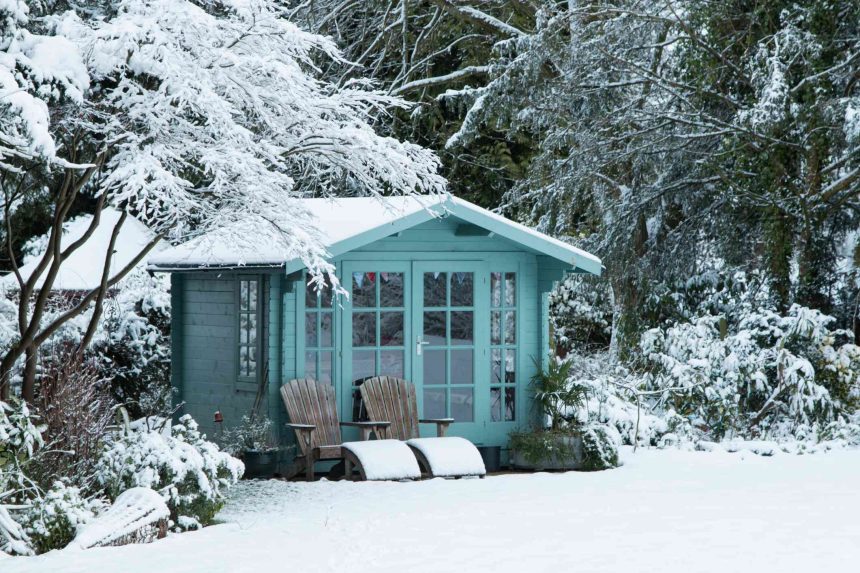January may feel quiet, but it’s the perfect time for planning and taking part in a few mindful gardening tasks. Winter may not feature the kind of sweaty, sun-soaked days among your plants as spring and summer, but there are plenty of helpful things you can dive into that’ll keep your green thumb happy.
“It’s always exciting to feel like I’m starting the growing process in January, even if it’s only a seed trays stacked in the fridge,” says gardening expert Ren Elizabeth.
If nothing else, January is the perfect month to reignite your excitement for gardening. Here are a few expert-backed winter gardening tasks you can start now.
Meet the Expert
- Ren Elizabeth is the steward of a 5 acre homestead and the author of the educational blog ecofriendlyhomestead.com.
- Kim Butler is a master gardener based in Central Florida and is the founder of Urban Homestead Hub.
- Laura Janney is a gardening expert and founder of The Inspired Garden, a full-service garden and container business with an online course.
Start Seed Shopping
January is a perfect time to check the new stock at seed companies as many refresh their collections this month. It’s a fun way to find new and interesting plants for the year ahead.
“There’s something about sitting in front of the fire with a cup of tea in the dark of winter, visioning for the warmth and brightness of a spring garden,” says Elizabeth.
Want more gardening tips? Sign up for our free gardening newsletter for our best growing tips, troubleshooting hacks, and more!
Check on Bulbs
Now is also a good chance to ensure your current projects or any seeds or bulbs in the works are holding up okay this season.
“Make sure to occasionally check in on any tubers you are overwintering indoors,” says gardening expert Laura Janney. “You want your bulbs to remain firm and free of mold.”
Change water, adjust lighting or location, and start planning what’s in store for those budding bulbs before the weather changes.
Freshen Up Mulch
The Spruce / Jacob Fox
Mulch does so much for your garden, and helps prevent soil erosion while also boosting your soil’s health, according to Elizabeth. She recommends freshening up you winter mulch with a new layer—her go-to is organic straw. Fallen leaves also work wonders.
“I also like to start thinking about obtaining wood chips so that I can add them onto any pathways that need some freshening up,” she says. “Call around to your local arborists or power companies—many will give you wood chips for free.”
Plan Seed Starting and Cold Stratification
First, start by checking your seed-starting supplies; this includes everything from checking the working condition of your grow lights to cleaning your seed trays. It’s also a great time to start cold stratification.
“[Stratification] is something that perennial plants need, like rosemary, hollyhock, lavender, or echinacea,” Elizabeth notes, and lavender is one such example she starts in January.
Janney suggests repurposing milk cartons to sow snapdragons, foxgloves, and campanula.
“The containers work as mini-greenhouses right in your backyard and your seedlings will be ready for transplanting as soon as spring arrives,” she says.
Start the Right Seeds
Aleksandra Pavlova / Getty Images
January may not sound like the ideal month for plant growing, however, you’d be surprised—some seeds will be pretty close to ready. Janney says to check the backs of seed packets.
“If any of your seeds need eight to 12 weeks to grow, you’ll want to sow those in mid-February. Use grow lights, a greenhouse space or try your hand at winter sowing,” she says.
Different USDA hardiness zones might be ready for planting and won’t be as deeply impacted by freezing cold temperatures.
“For me in zone 9b, my fall/winter garden is in full bloom, so I am just starting my early spring seeds, and I am still planting carrots and radishes,” says master gardener Kim Butler.
Do Some Garden Clean-Up
Garden tasks will largely depend on what zone you’re in, but a great one for anyone is to clean up your garden and start planning. One aspect of this preparation should be weed management.
“Since weeds aren’t growing as vigorously as they would be in the warmer months, this is the perfect time to tend to weedy problem areas, like pathways or the edges of your raised beds,” Elizabeth says.
Inspect Your Tools
The Spruce
While things are quieter outside, it’s a good chance to look indoors at the very tools you’ll need when spring rolls around.
Janney recommends cleaning and disinfecting your garden tools now. She also notes that pruners will need to be sharpened, and you should review what you currently have on hand in case replacements are necessary.
“Think ahead to your spring garden plans and purchase any equipment you may need like stakes, garden string, fertilizer, or a new set of gloves,” Janney says. “You’ll thank yourself later.”
Continue Learning
Janney and Elizabeth both agree that there’s no better time to continue growing your gardening and plant knowledge than January. They suggest books, YouTube videos, Pinterest, and blog posts to feed your fire and get excited about the upcoming months.
“You might get ideas that will benefit you in the upcoming growing season, or solve issues that you’ve dealt with in prior years,” says Elizabeth. “If you’re an established gardener, try to learn about something a bit more advanced, like soil science or making your own plant-based fertilizers.”
What to Skip in January
Lastly, there are a couple of things not worth doing in January, according to the experts.
- Overdoing it: You have a whole year to garden, so don’t overwork yourself in January. “Use this time to rest and reflect on your successes and failures of the following season,” says Janney.
- Sowing crops too early: Some crops just can’t handle the cold, and while you may be excited, it’s worth skipping things like tomatoes, eggplants, and other summer crops. “Unless you live in a very warm climate, these crops will need to be potted up frequently in your home and will start to take up a lot of space before it’s warm enough to plant them out,” says Elizabeth.
- Not planning at all: There’s no problem in taking it easy, but your future self will thank you for taking some time to plan placement, quantities, bloom times, colors, and heights, according to Janney. “This way when spring rolls around you will be ready to go and not be overwhelmed at the nursery,” she says.





